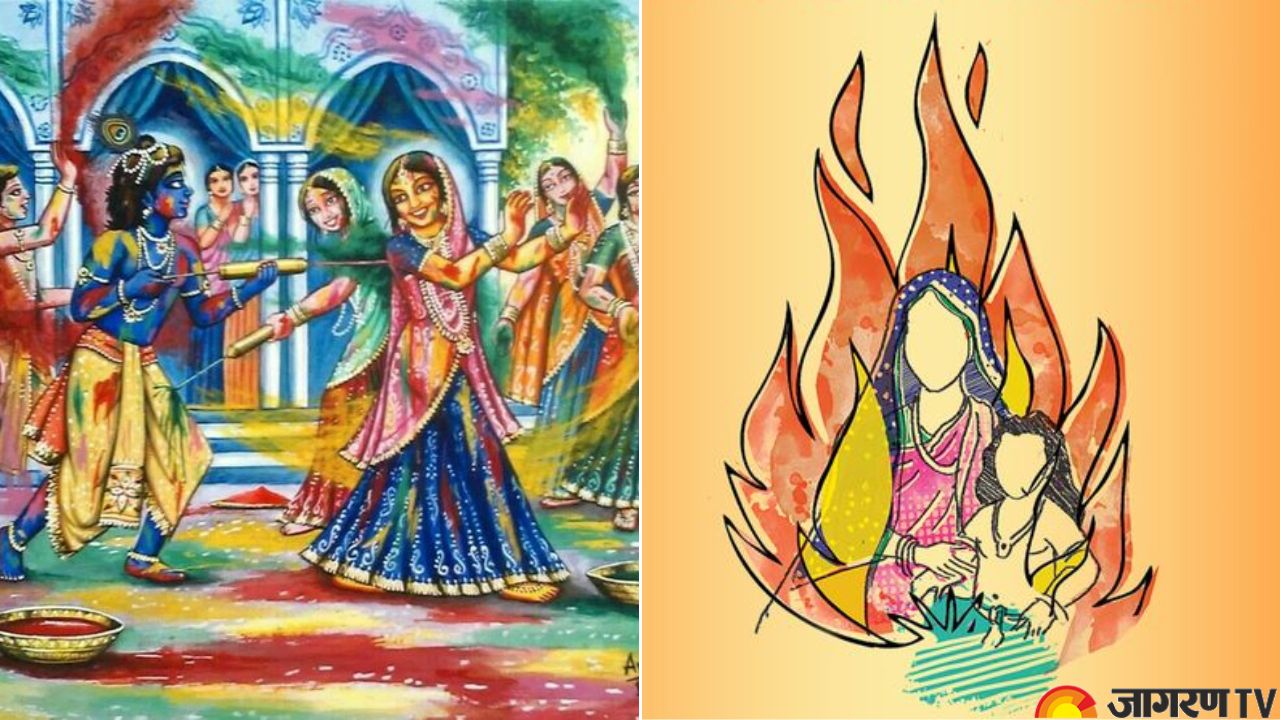Holi 2025: Not Only Holika Dahan, These Mythological Stories Are Also Related to The Festival of Colours

Stories on Holi: In India, different types of festivals are celebrated with great enthusiasm and joy. From the fireworks of Diwali to the illuminated festivities and pandals of Durga Puja, India is known to celebrate each and every festival with the same fervour. Holi is considered one of the major festivals of the country, celebrated across the globe. In 2025, Holi will be celebrated on 13 and 14 March, starting with Holika Dahan on 13th March, 2025. Holi is one the most anticipated festivals of India, where colours of love, joy, and togetherness spread in the air, with lots of delicacies and activities making it even more extraordinary.
Holi History
Talking about Holi, we have always heard about that one story about Prahlad, demon king Hiranyakashipu, and Holika. However, if legends are to be believed, there are other mythological stories related to Holi and the tradition of celebrating it with colours. Let us know more about these stories and their significance.
Holika Dahan Story
The legendary story of demon king Hiranyakashipu and his son Prahlad, who is a devotee of Lord Vishnu. Hiranyakashipu was granted five wishes from Lord Shiva for his protection, so he ordered everyone to worship him. However, Prahlad continued to worship Lord Vishnu, making Hiranyakashipu furious and angry. He told his demon sister Holika to kill Prahlad. A bonfire was ignited, and Holika sat on it with Prahlad on her lap. Despite her boon of being immuned of fire, Holika was burned to ashes, but Prahlad escaped the flames without a scratch on his body. Later, Lord Vishnu killed Prahlad’s father Hiranyakashipu, eliminating his five boons and symbolizing victory of good over evil.
Radha-Krishna Story
Holi is also associated with the divine love of Lord Krishna and Radha. Lord Krishna once complained to his mother about Radha having light skin colour while he was dark. In response, Yashoda suggested him to apply colour on Radha’s face. Thus, the tradition of applying colours at Holi is thought to have originated from Lord Krishna’s joyful act. Radha and Krishna’s love symbolizes the divine and devotee’s eternal connection, as well as the celebration of love and togetherness.
Kamadeva’s Sacrifice Story
Another mythical story related with Holi is on Kamadeva, the god of love and desire. According to Hindu legend, Kamadeva offered himself to Lord Shiva’s fury in order to restore the balance destroyed by Shiva’s deep meditation. Shiva was struck by the power of Kamadeva’s love and later revived him in an incorporated form. In South India, Holi is celebred to honour Kamadeva’s sacrifice and the renewal of love and desire. It is said that Lord Shiva burned Kamadeva on Holi.
Chasing Away Dhundhi
During Prithu’s rule, ogress Dhundi was unstoppable, but her weakness was the wildness and mischief of young boys. A priest suggested that, in order to vanquish the ogress, all of the boys be sent out at the start of the spring season to gather firewood and make a fire. The boys should then circle the fire, laughing, beating drums, clapping, shouting, and insulting her, until she leaves. This is why young boys are still allowed to be rowdy and use offensive language during Holi.
Pootna’s Death
Holi is also celebrated to commemorate the death of ogress Pootana, who was killed the night before Holi. Her death signifies the end of cold, dark winter and the beginning of spring. Kansa, the king of Mathura, commanded Pootana to kill infant Krishna by feeding him poisoned milk, but Krishna sucked the life out of her and killed her.
Related videos
-
Eid 2025: Uttar Pradesh, MP में ईद पर मुसलमानों ने कर दिया बड़ा ...
-
Eid Ul-Fitr 2025: UP Government Sets Rules to Read Namaz in Public Places, Strict Actions ...
-
Eid Ul Fitr 2025: Know The Correct Date of Eid in India, Moon Sighting Timing ...
-
Bihar Tej Pratap : स्टेज से ये क्या बोल गए तेजप्रताप यादव, सोशल ...









